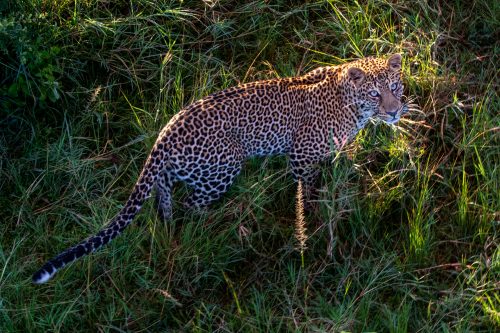
This Week at Angama features a few photographs (the first five below) from our youngest contributor to date: 10-year-old Ben Waldman from San Francisco, California. Ben has a passion for photography, and brought some of his work into the Angama Photographic Studio to share with me. I enjoyed teaching Ben the editing power of Adobe Lightroom and, in no time, he was editing images on his own. Thanks to Ben for agreeing to have a few of his best shared in this week’s blog, and we hope he continues to pursue his passion.
Another highlight for me this week was time spent with hyenas which, if given a chance, always prove to be one of the most rewarding animals to watch. There are currently two excellent spots for observing hyenas at close range at the moment: an area quite near to Angama Mara hosts a clan lounging in the road nearly every morning, and a den with young cubs to the south past the salt lick. I spent extended time with both, enjoying watching the unexpected playfulness and tenderness expressed in their social interactions. They are truly wonderful animals.
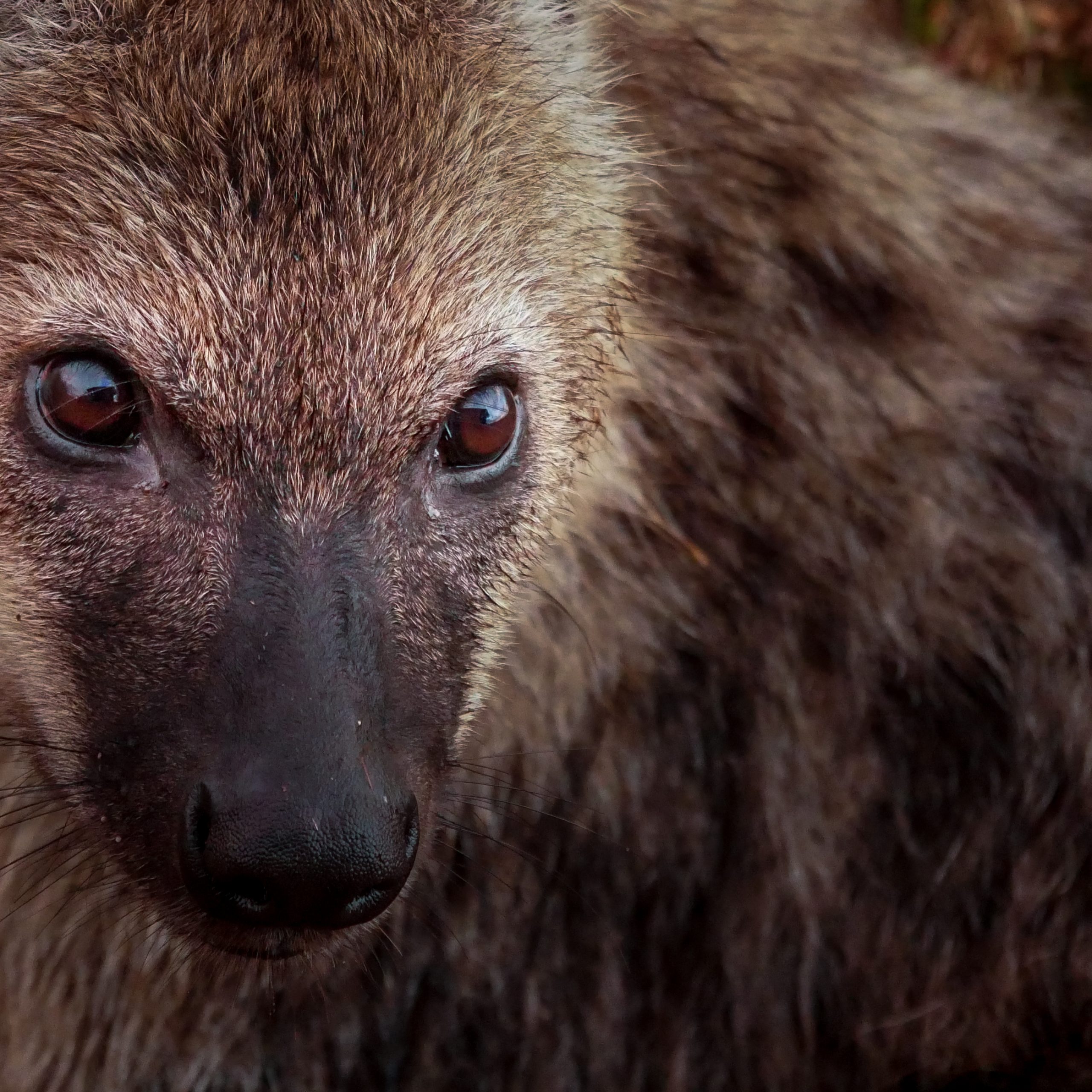
Photograph by Ben Waldman
Ben also clearly spent some time with hyenas this week, and captured this lovely image of a cub staring up at him. Ben did a great job focusing on the eyes and using a wide aperture to create a narrow depth of field, directing the viewer’s attention straight to the cub’s gaze. [f/4.0, 1/60, ISO 3200]
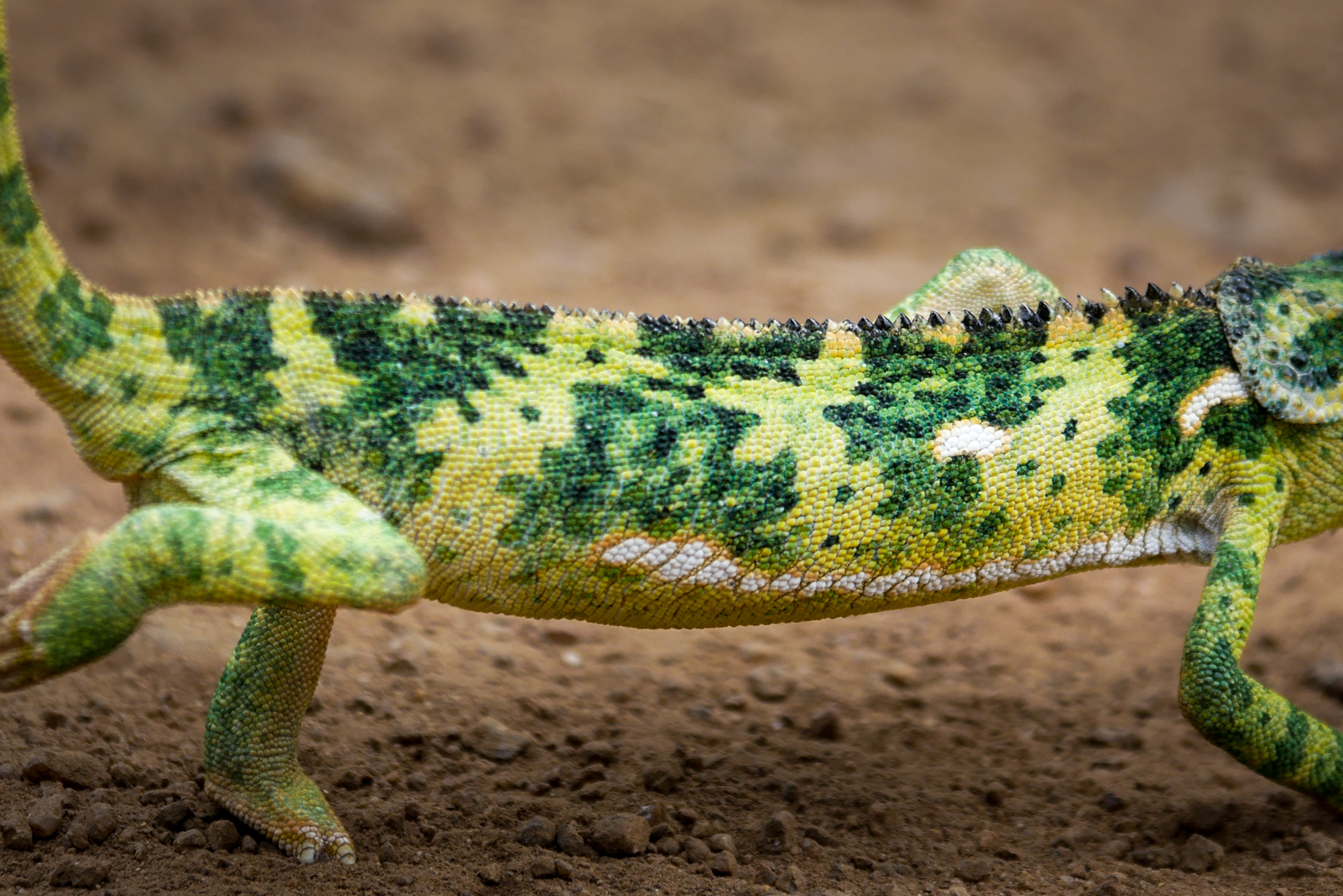
Photograph by Ben Waldman
How lucky Ben and his family are to have found this beautiful little flap-necked chameleon crossing the road. I love the vibrant colors of this photograph, and the abstract approach of focusing on the exquisite pattern and texture of the body, but still have the legs in the frame to capture the movement. [f/4.0, 1/500, ISO 200]
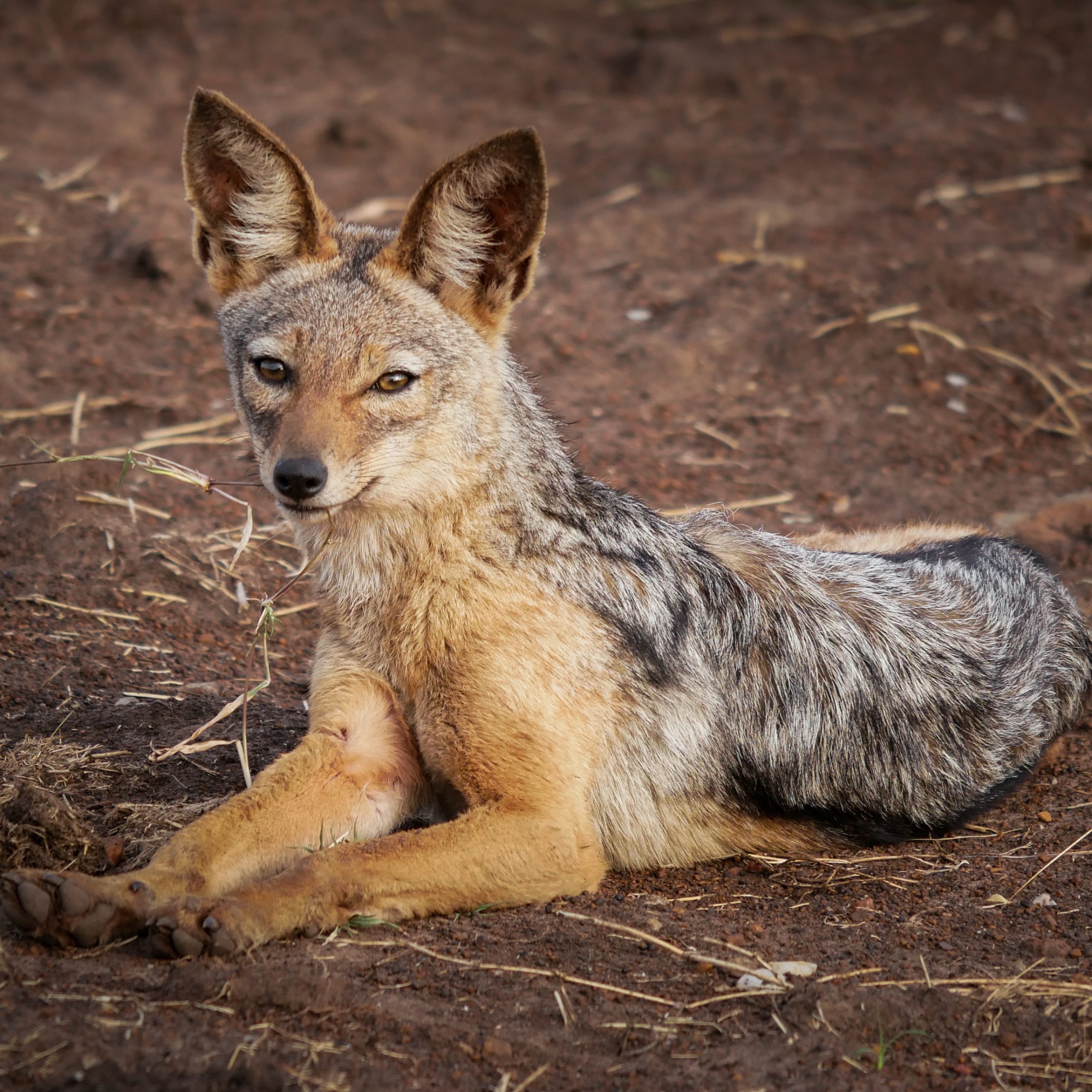
Photograph by Ben Waldman
Ben captured this jackal beautifully, which was playing with grass and dried elephant dung. Look carefully and you’ll see it’s still tugging at some dried grass – fantastic to capture these funny little behaviours of our regular Mara characters. [f/5.0, 1/500, ISO 400]
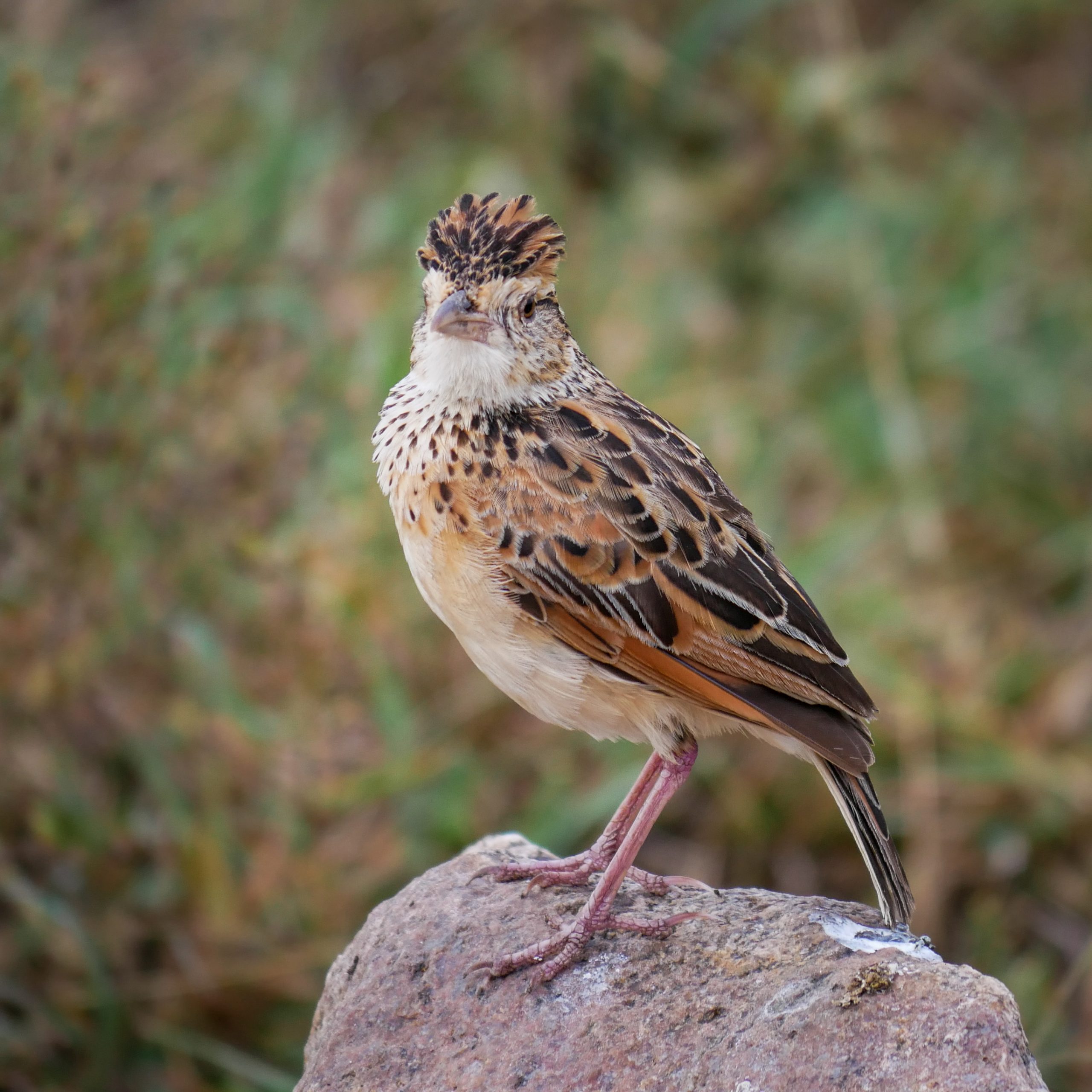
Photograph by Ben Waldman
A really lovely shot of one of our favourite birds here at Angama Mara (because it is Mama Nicky’s all-time #1 best bird), the rufous-naped lark. Widespread and ubiquitous, its song ringing out from the bush across sub-Saharan Africa, it’s often overlooked as an “LBJ” (little brown job), so kudos to Ben for taking the time to appreciate and snap such a crisp, rich image of this species. [f/5.6, 1/640, ISO 500]
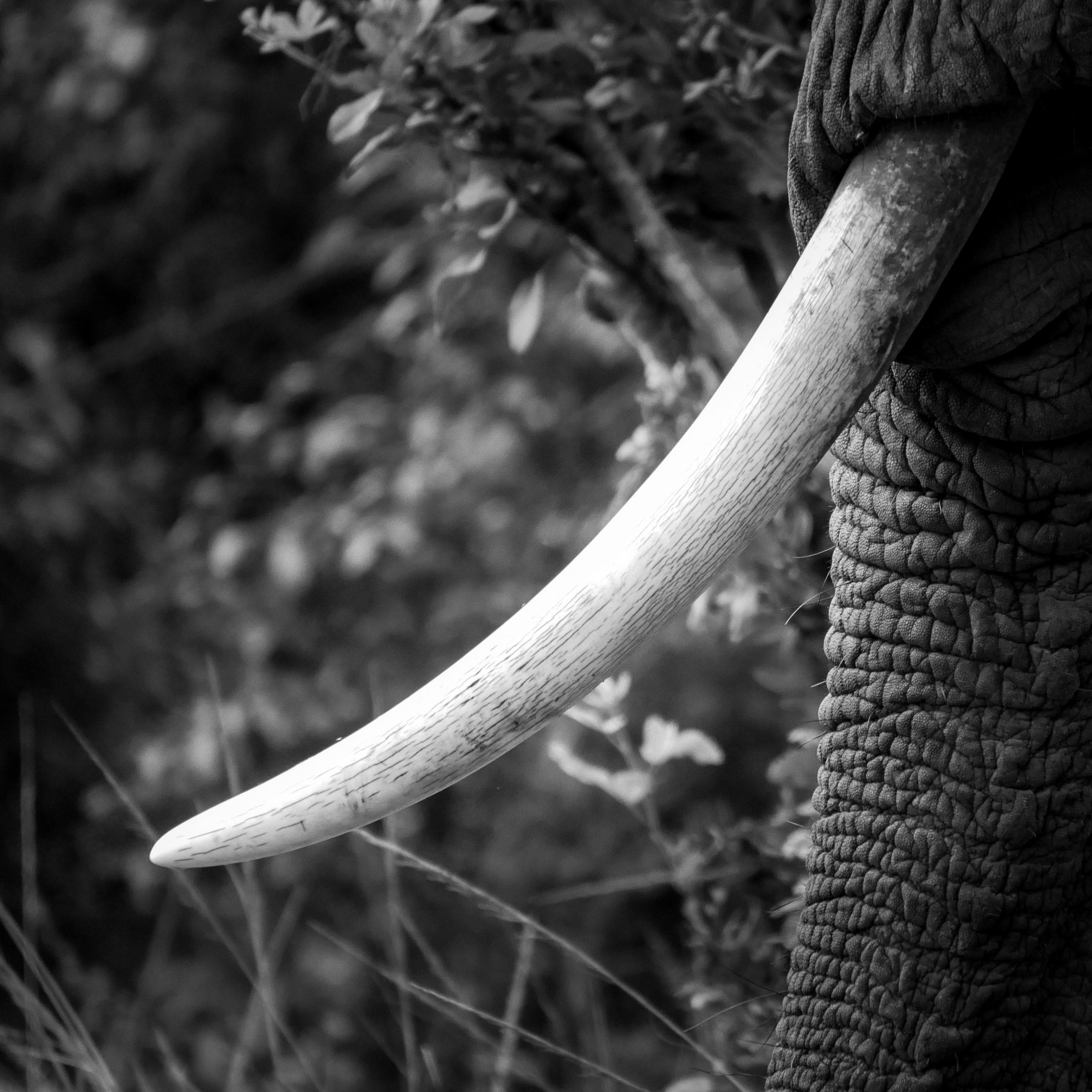
Photograph by Ben Waldman
Like the chameleon above, Ben employed a nice abstract approach to this elephant. Keen eyes for a 10 year old to recognise elephants are challenging subjects, and sometimes it’s best to think outside the box. [f/5.6, 1/640, ISO 1000] (Converted to B&W)
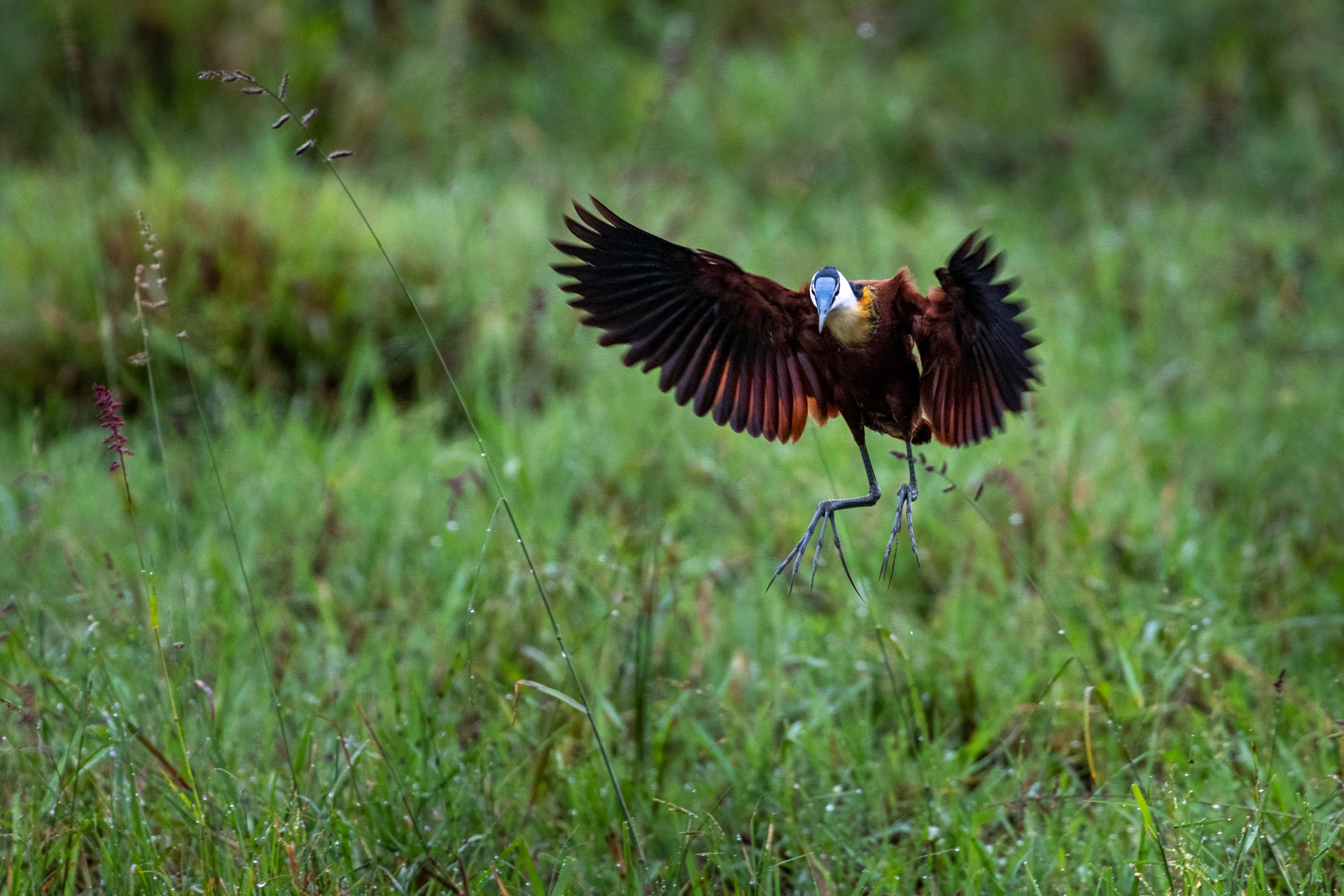
The bird activity in the wetlands is amazing at the moment, with hundreds of waterbirds probing the marsh and its pools for frogs, fish and insects. It’s a great opportunity to wait in one spot, switch to Servo autofocus (essentially, autofocus on a subject as it moves), and try to capture birds in flight. Here, I was really lucky to have an African jacana fly towards me. A shutter speed of 1/640 wasn’t quite fast enough to crisply freeze the wingbeat, but the blur at the wingtips ends up being a nice touch. [f/5.6, 1/640, ISO 400, -1.0]

Any ideas what this animal is? Something with spots, but not the short hair of a leopard, cheetah, or serval… it’s a hyena. Interesting to see it up close; quite shaggy, and longer than most other predators in the Mara. [f/5.6, 1/400, ISO 400, -1.0]

Here are a few members of the clan that spend every morning and evening lounging in the road: a big mama taking a snooze, with two younger cubs approaching from behind. I used a wide aperture to create a narrow depth of field so the cubs in the background were blurred but recognisable. [f/5.6, 1/250, ISO 400, -1.0]
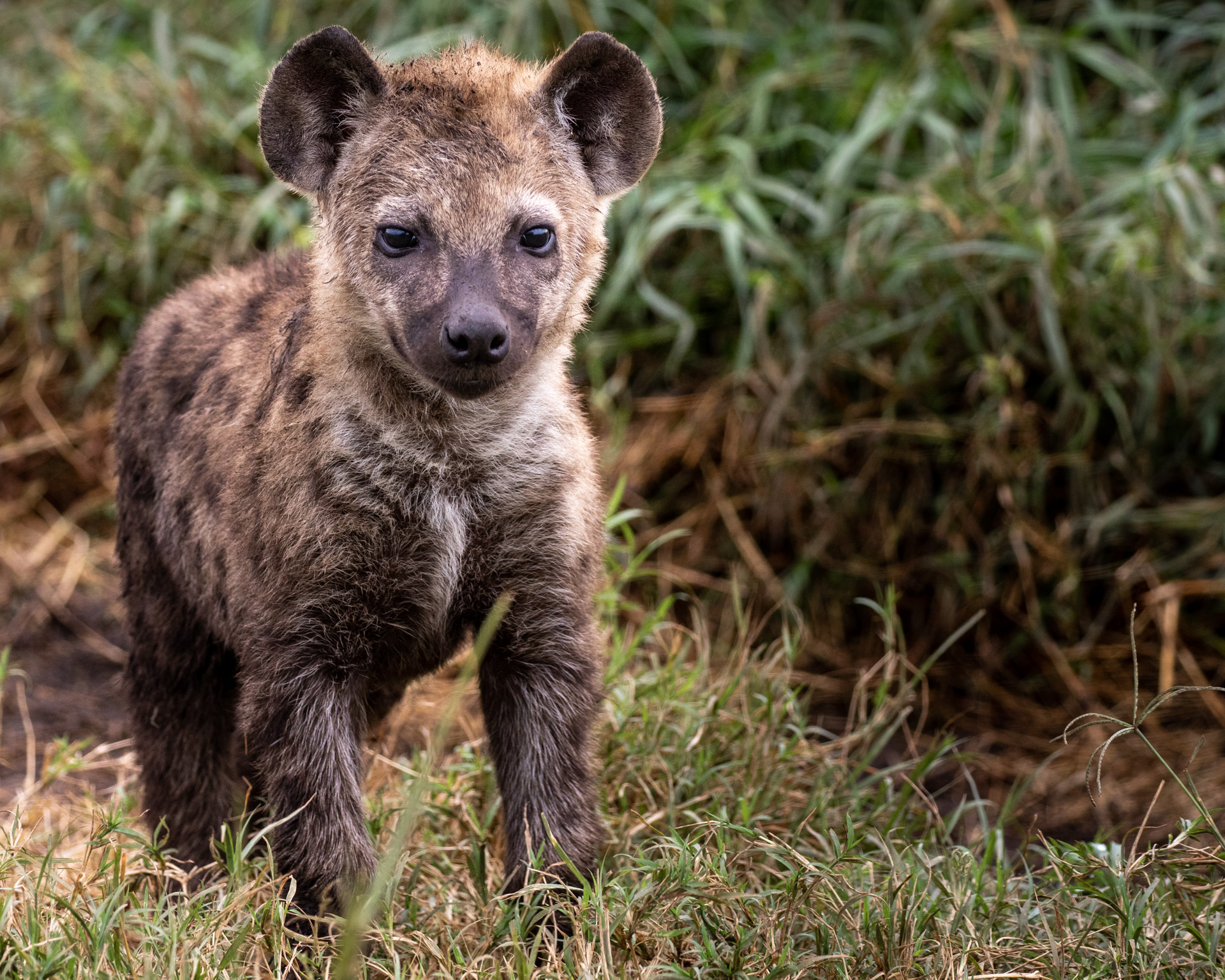
Aren’t they the cutest? How can these guys get such a bad rap? What I love about hyena cubs is how inquisitive they are, often approaching a stopped, quiet vehicle to investigate. [f/5.0, 1/1250, ISO 400, -1.0]
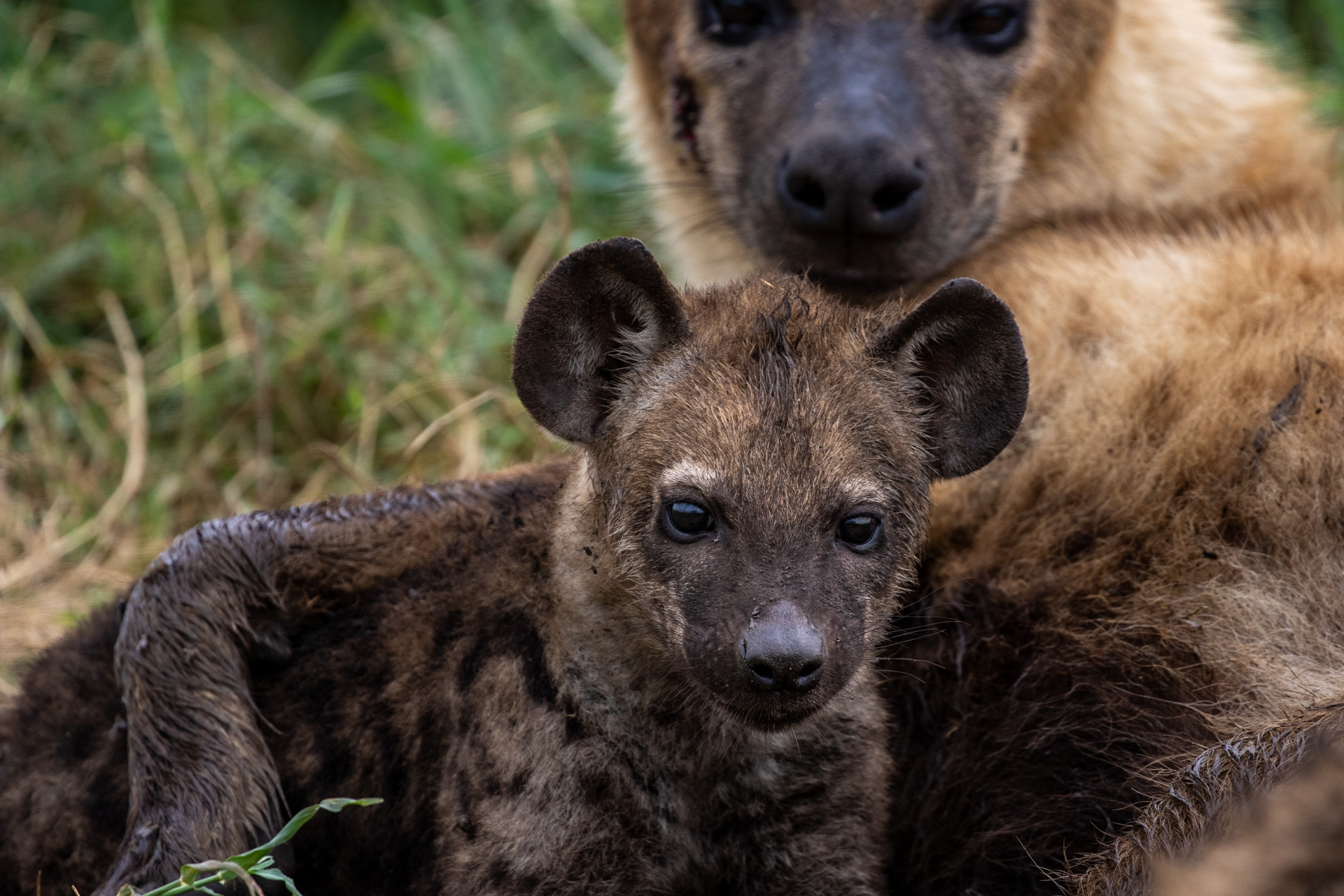
[f/5.6, 1/1250, ISO 400, -1.0]
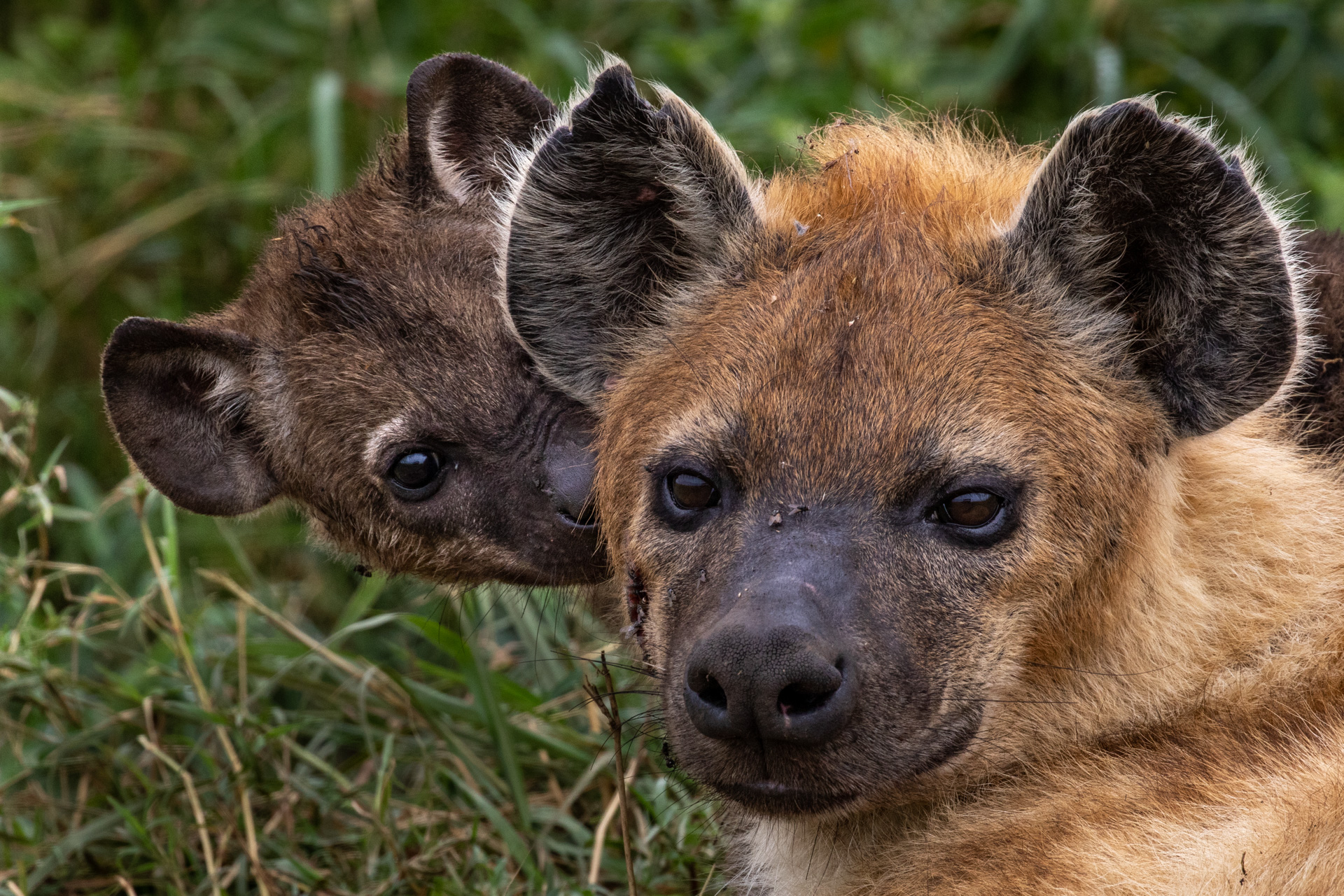
[f/11.0, 1/500, ISO 400, -1.0]
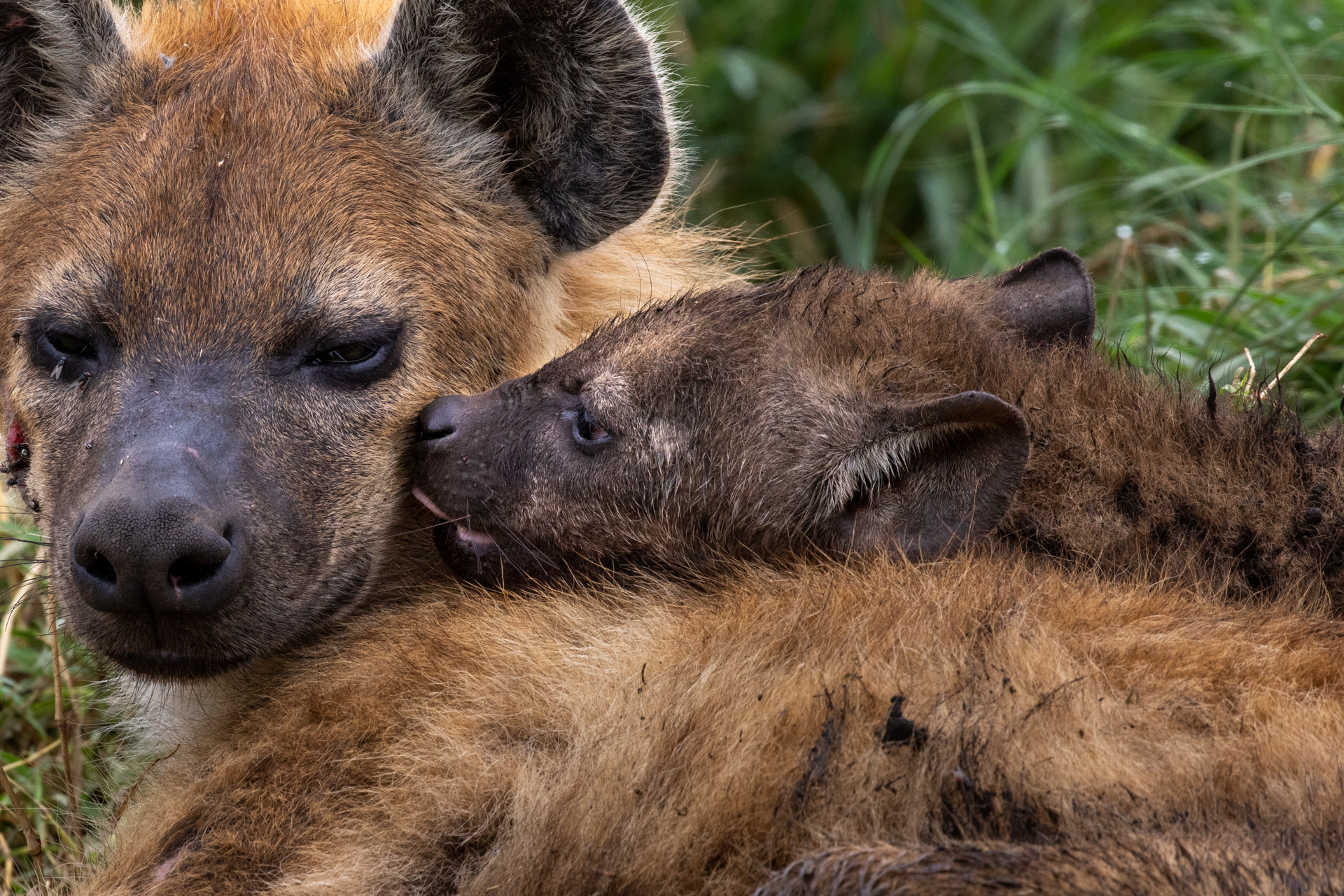
[f/11.0, 1/400, ISO 400, -1.0]
At the hyena den near the salt lick, a lone female was with her two young cubs, one of which was enjoying some cuddle time. I love how the female has her paw slung over her cub in the first shot, while the second and third show the affectionate behaviour between baby and mom so commonly seen in mammals. Hyenas are such a misconstrued species. (I used a narrow aperture in the second and third photograph so there’d be enough depth of field to capture both mom and cub clearly).
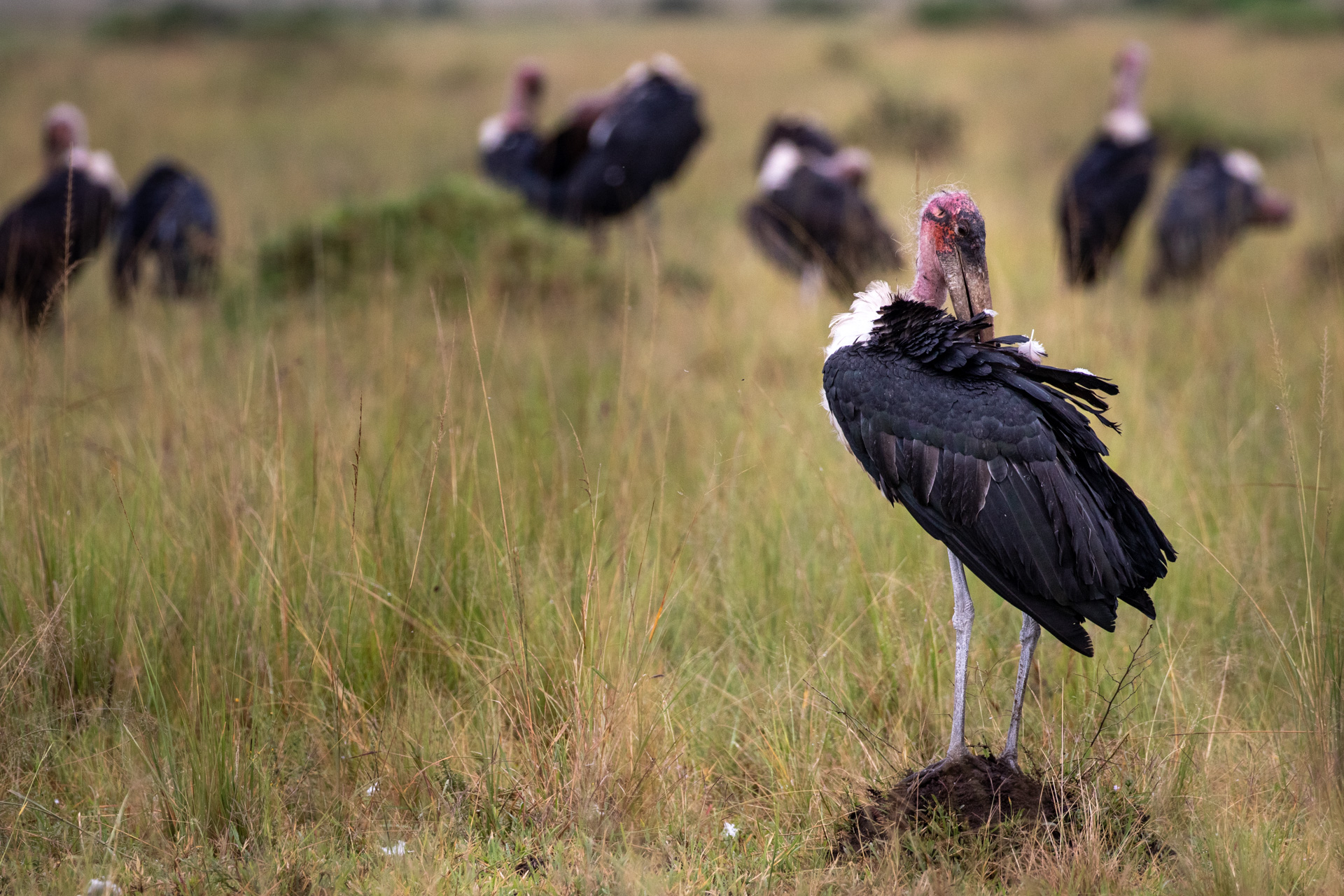
One marabou stork stands apart from its brethren (a “funeral” of marabous – how morbidly fitting is that collective noun?) preening itself, offering a nice opportunity to create a portrait of one with the others as a blurred background. [f/5.0, 1/1000, ISO 400, -1.0]
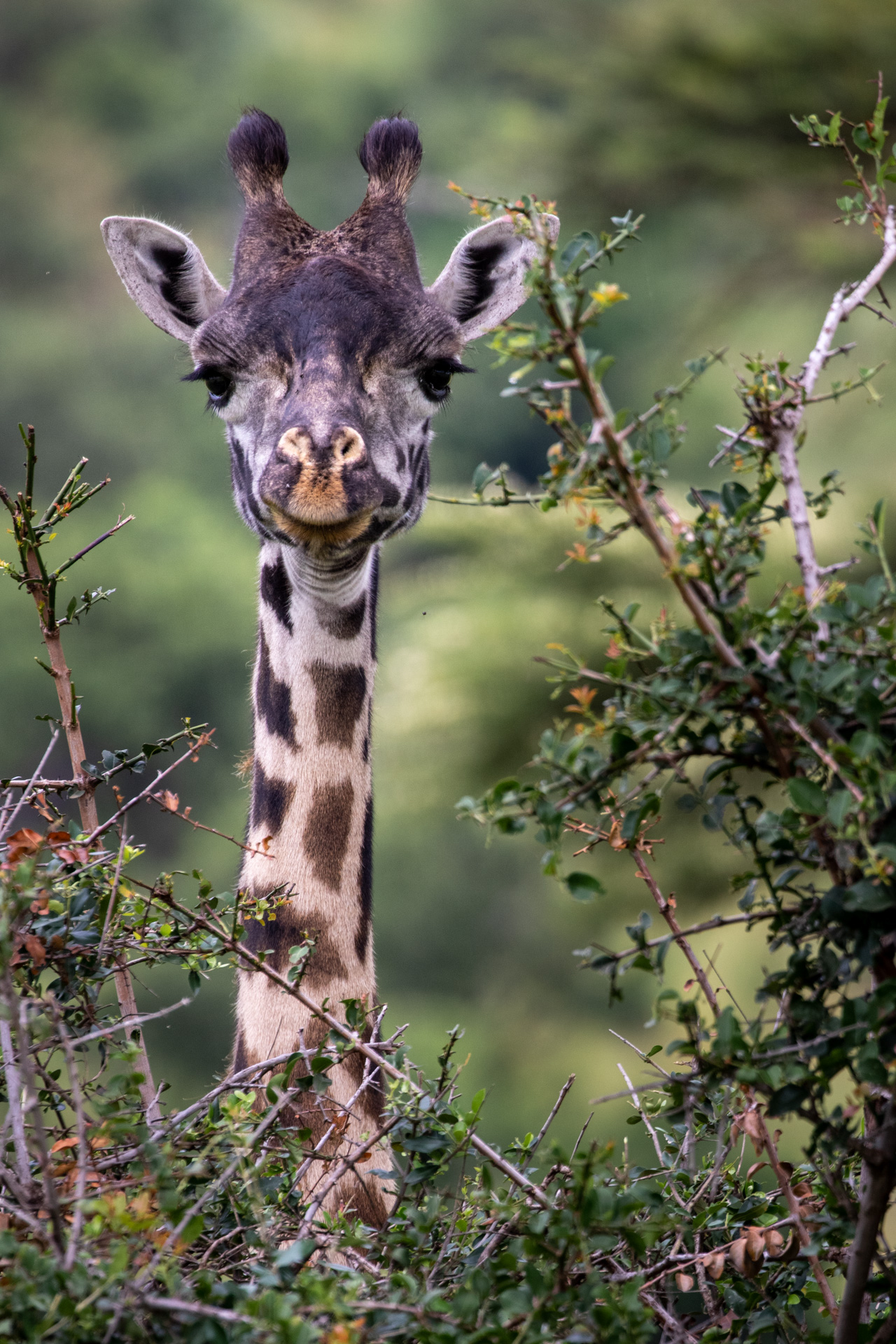
I enjoyed looking up to find this young female Maasai giraffe looking back at me from behind a bush that created a lovely natural frame. [f/5.6, 1/800, ISO 400]
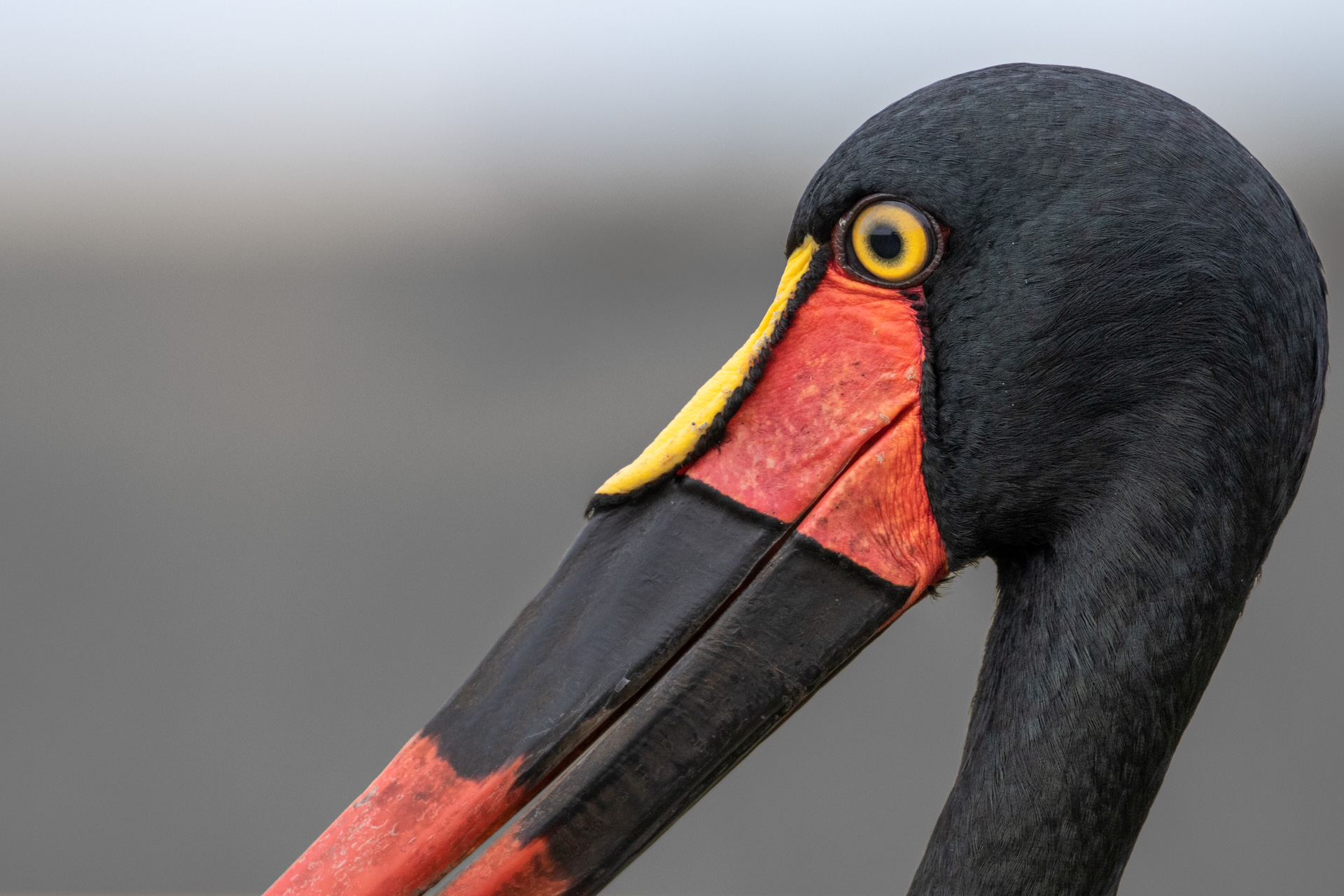
I was very fortunate this week to have an opportunity to study up-close a couple of saddle-billed storks. Massive but elegant birds, with murderous but beautiful bills. Here I tried to focus on the eye and yellow namesake “saddle.” By doing so, I discovered something I had never noticed before: that the saddle is ringed by little tufts of black feathers. [f/5.6, 1/1600, ISO 400] (Background desaturated to draw attention to the remarkable pattern and colors of the bill.)
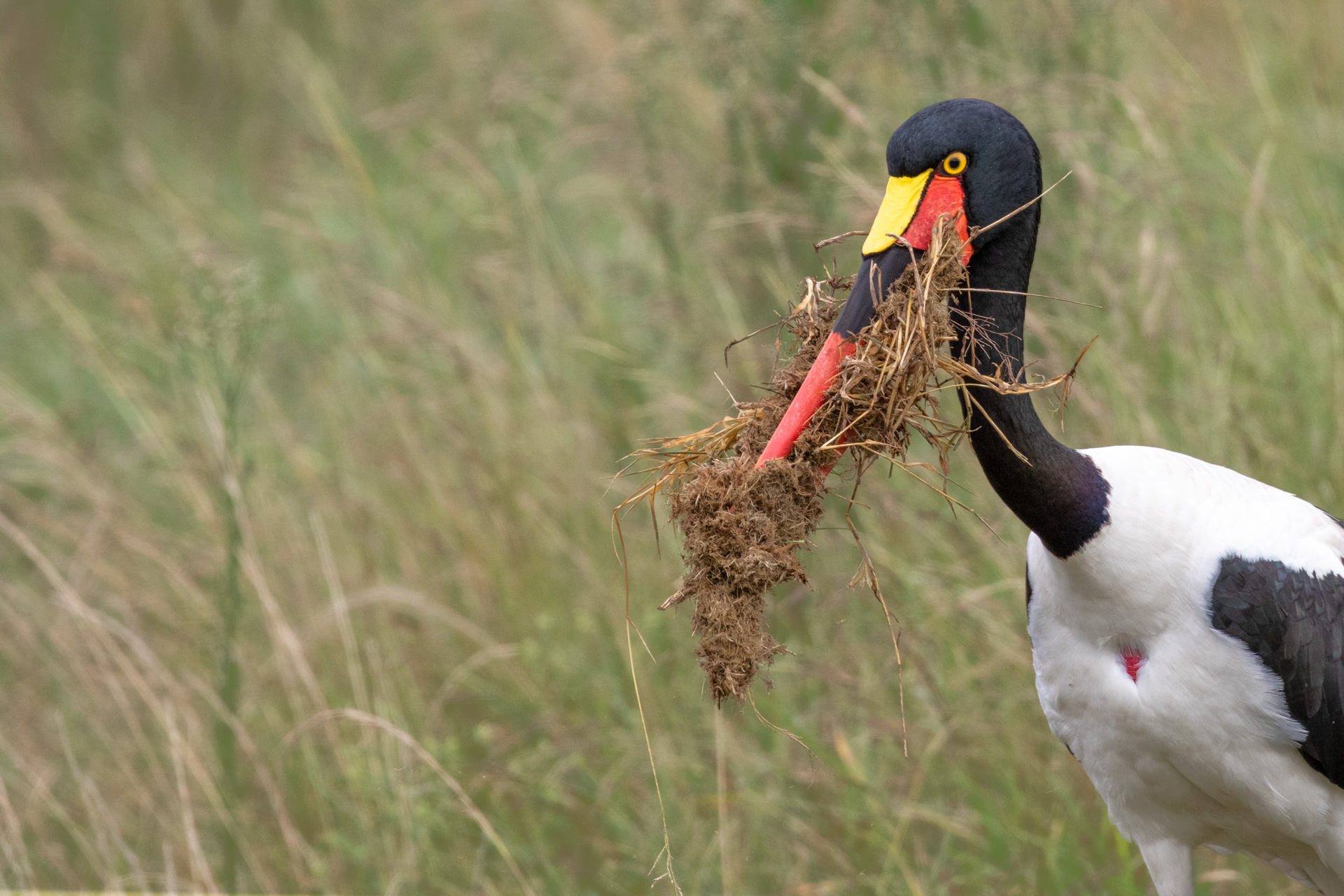
[f/5.6, 1/2000, ISO 400]

[f/5.6, 1/1600, ISO 400]
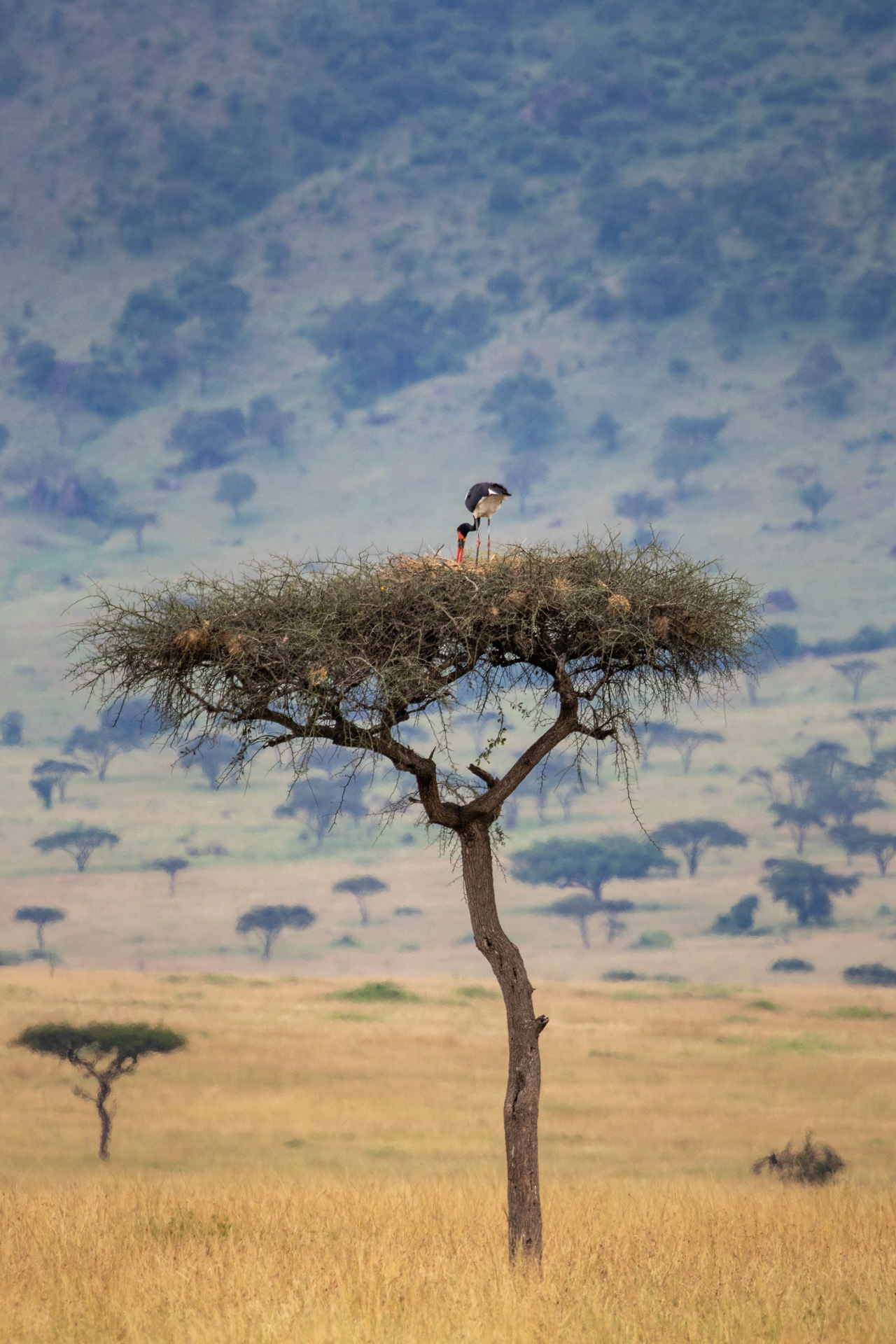
[f/5.6, 1/1000, ISO 200]
Best of all about spending time with these saddlebills was discovering that they were nestbuilding – my first time finding such a nest. They flew surprisingly far from the Balanites they’d chosen for their new home, and were unbelievably picky about the material they choose, spending minutes meticulously arranging a billful of dried elephant dung and grass, before dropping it and seeking better elsewhere. Only the best for baby saddlebills. (The female is the one with the yellow eye; the male is dark.)
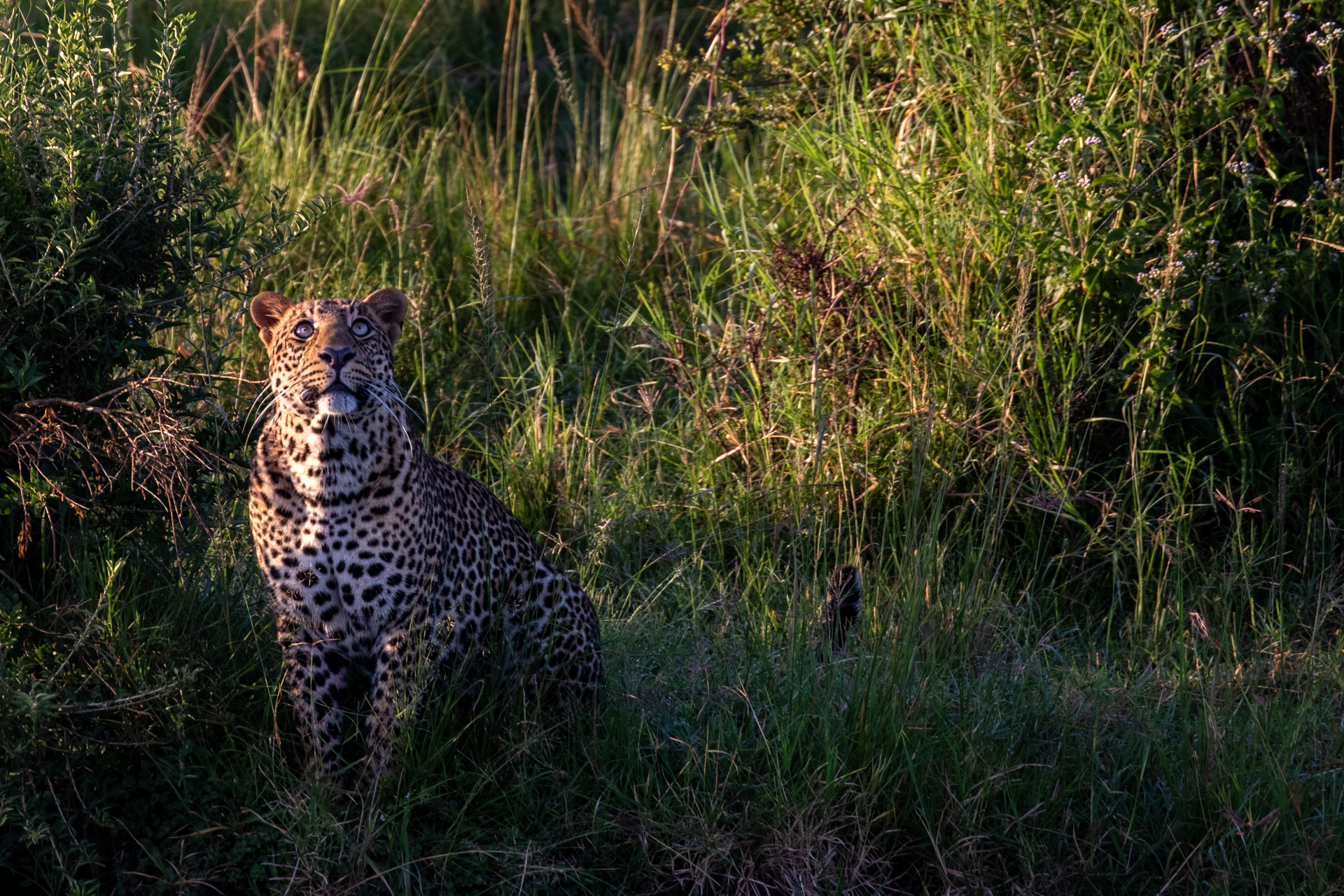
[f/5.6, 1/400, ISO 400, -1.0]

[f/5.6, 1/160, ISO 400, -1.0]
Finally, though technically from last week, this happened after the weekly blog had been submitted but was such a remarkable sighting that we just simply have to share it. While enjoying a float over the Mara with Governors Balloon Safaris, we spotted a young male leopard directly in our flight path. Remarkably, it was more curious than fearful, watching in bewilderment as we gradually approached, gazing straight up at the colourful envelope before trotting off, still looking at us, as we passed directly overhead. Chief Pilot, Mike Carnevale, said it was his best leopard sighting in 16 years of flying in the Mara. Lucky us!
THIS WEEK IN THE PAST
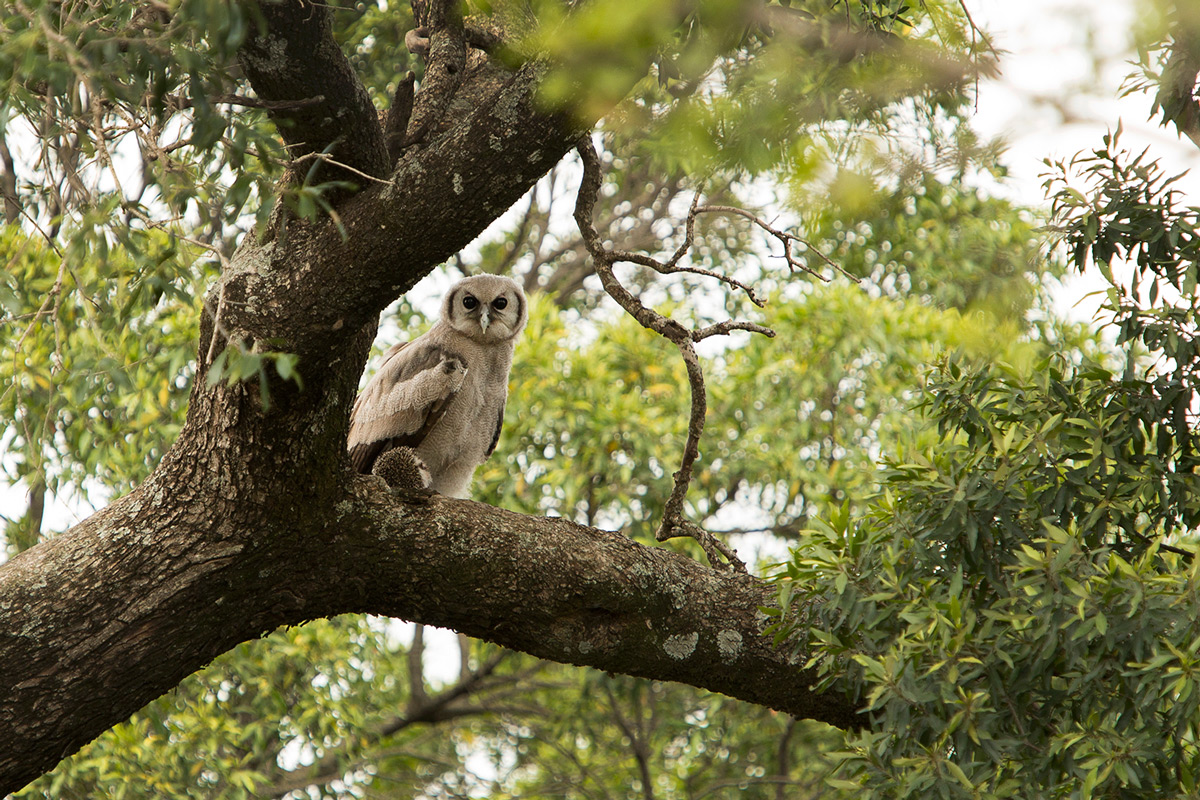
What fun it is to look back at past entries from the same week of the year. In 2018, Adam focused on “Capturing the Action” and has some stunning photos of lions on the hunt and both a heron and an owl with kills (above, a young Verreaux’s eagle-owl with a hedgehog snack).
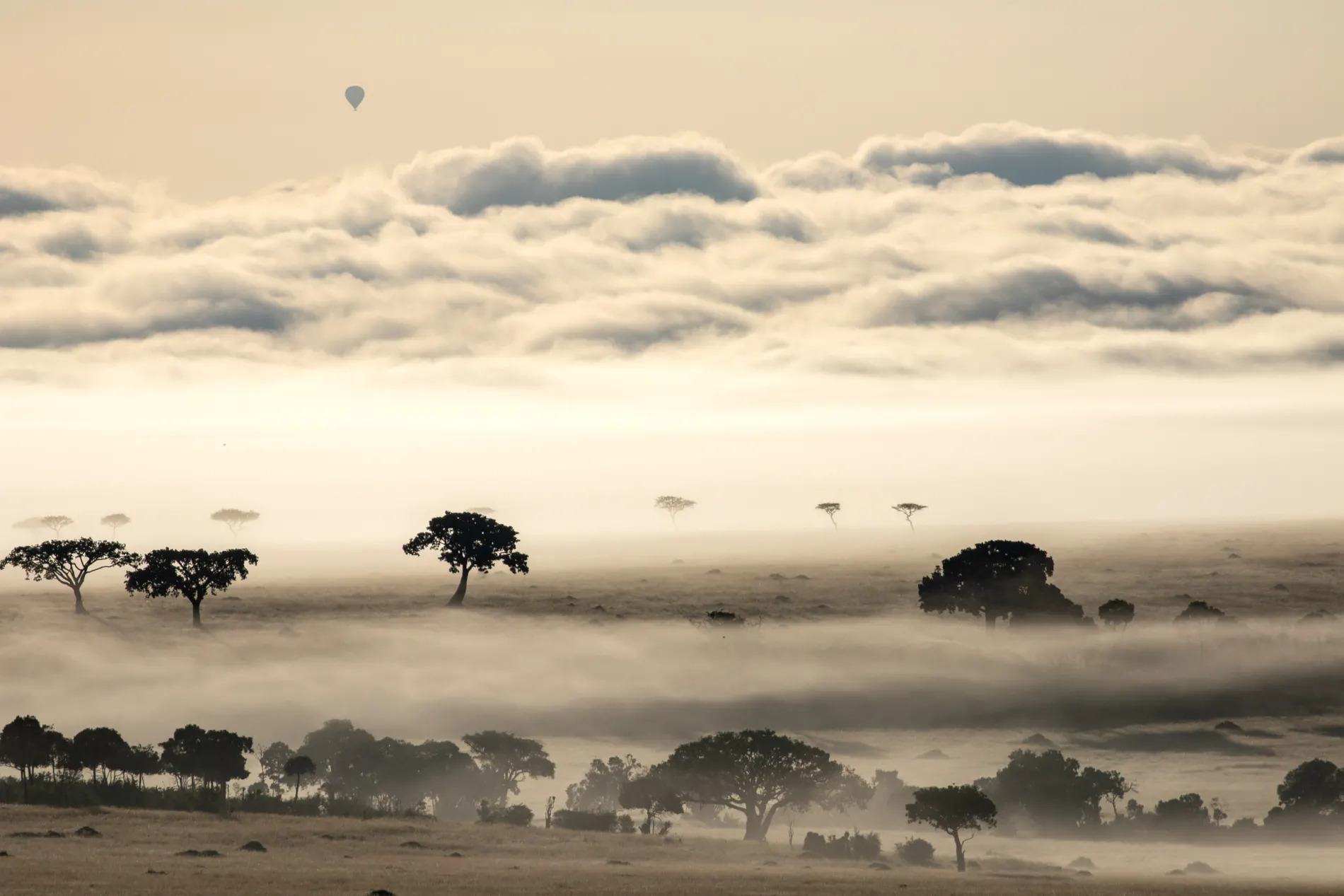
Last year, we had wonderfully misty mornings, which made for great silhouettes in the hazy morning light, and dramatic and delightful cloudy landscapes like the shot above.
Filed under: This Week at Angama
Subscribe for Weekly Stories
Comments (1):
28 February 2020
Oh my goodness! You got to see Chiwawa! He is also known as Blue Eyes. He is the son of the magnificent Kaboso female who spends most of her time in the conservancies. I know it is hard to get bearings while flying, but do you have an idea as to where you saw him? An email would be great. I head the Leopards of the Mara group on Facebook, and it would be interesting to see if he is moving into the reserve since he has been mostly spotted in Mara Naboisho Conservancy around the Ottepesi Tented camp area.
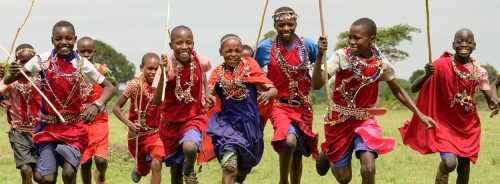
The Angama Foundation